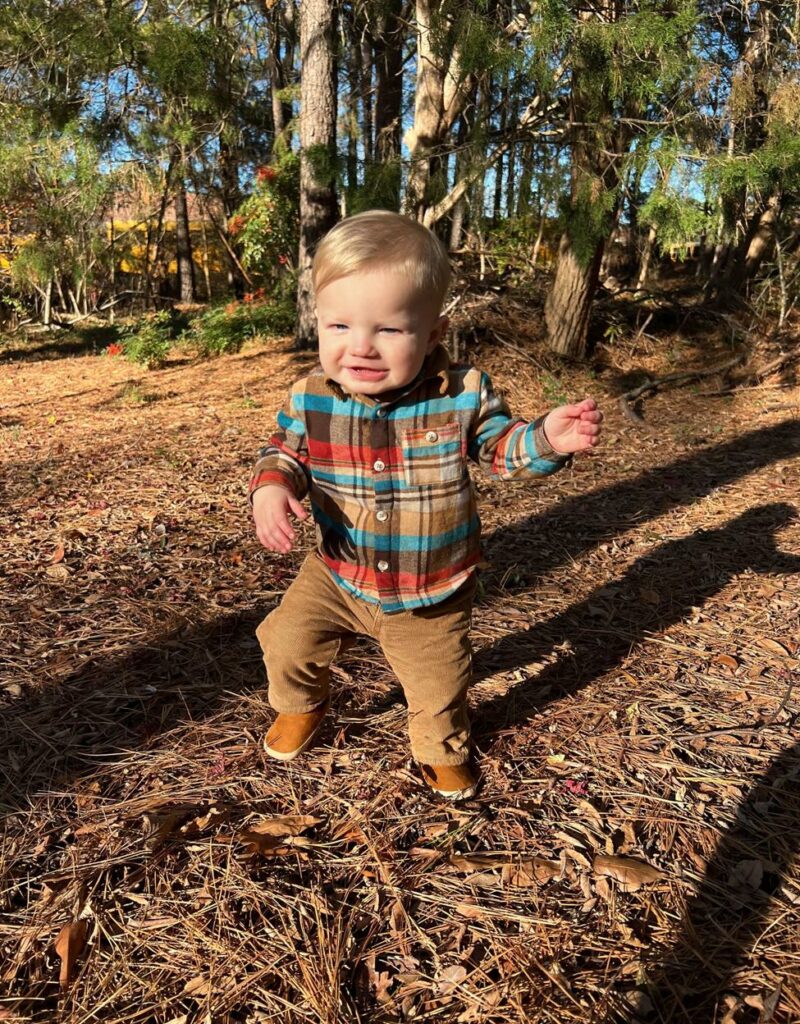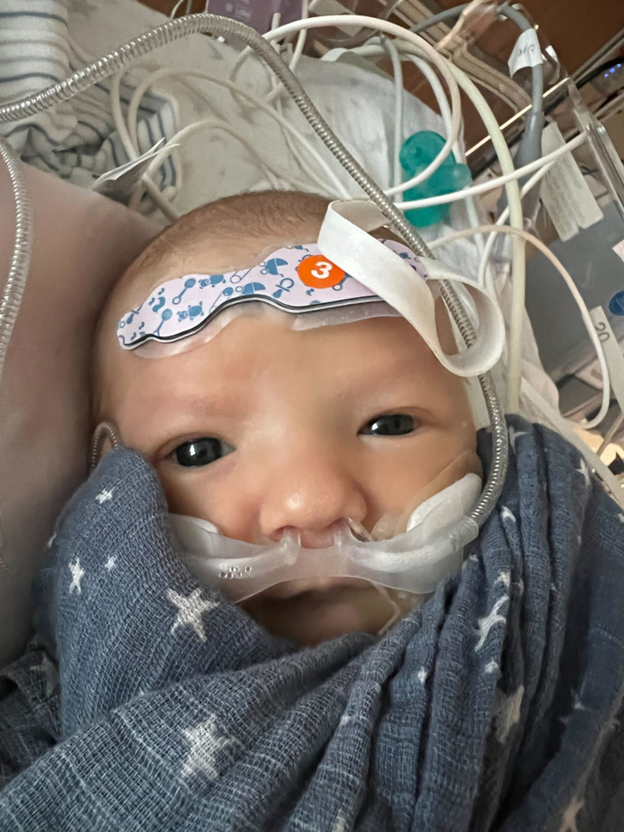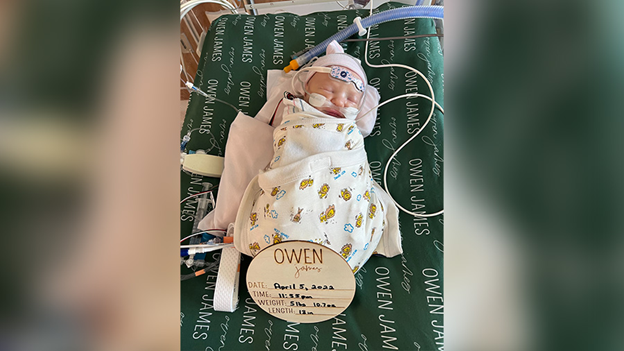In a medical breakthrough that captured the world’s attention, Owen Monroe (Real name), who was only 18 days old then, became the first person in the world to undergo a Partial Heart Transplantation. This historic surgery, performed in 2022, has not only changed the course of Owen’s life but has opened new possibilities for children born with congenital heart defects.
The groundbreaking procedure has reached another milestone, as detailed in a study published in the prestigious medical journal JAMA.
Owen’s doctors have documented a remarkable achievement: the tissue used to repair his heart has grown, a feat long pursued in tissue engineering.
About the partial heart transplant surgery

Picture credit: https://edition.cnn.com/2024/01/02/health/partial-heart-transplant-growth?cid=ios_app
At the time of his initial surgery, Owen’s heart was comparable in size to a strawberry. Fast forward to today, at 20 months of age, and his heart has grown to about the size of an apricot. More importantly, the new valves and blood vessels have seamlessly kept up with his growth, offering the hope that Owen might not require additional risky heart surgeries throughout his life.
This revolutionary development has been the focus of Hollywood scriptwriters, who recently integrated Owen’s extraordinary story into a compelling episode of the long-running medical drama “Grey’s Anatomy.”
The medical community is excited, and Dr. Kathleen Fenton, chief of the Advanced Technologies and Surgery Branch of the National Heart, Lung, and Blood Institute, calls it a “huge advance.” While cautious about the need for further research and long-term follow-ups, she expresses optimism that this could be a unconventional advance for a subset of children with congenital heart defects.
The success of Owen’s surgery has spurred a swift adoption of the technique. Since his innovative operation, 12 other partial heart transplants have been performed in children.
Moreover, the technique has facilitated “domino transplants” and “split-root transplants”, allowing a single donor heart to save the lives of two critically ill infants. Dr. Joseph Turek, chief of pediatric heart surgery at a famous health institute and the surgeon behind the partial heart transplant believes this approach could help hundreds of children annually.
Dr. Turek, the new study’s lead author, states, “There are 500 pediatric heart transplants that we do in a year, so for the vast majority of those kids getting hearts, they would have their old hearts available. We could use their valves. So, my guess is, this could help over a thousand kids a year, hopefully.”
A tiny procedure

Picture credit: Owen Monroe shortly before having a procedure to fix his heart in 2022.
Owen’s parents discovered their son’s serious heart defect during an in-depth ultrasound during the 20th week of pregnancy. Owen was diagnosed with a rare congenital disability called Truncus arteriosis, affecting approximately 250 babies born each year.
Truncus arteriosis results in the fusion of the two major blood vessels from the heart, leading to a mix of oxygenated and deoxygenated blood. Additionally, babies born with this condition often lack a valve needed to prevent blood from flowing backward, and many have a hole between the heart’s pumping chambers.
Making the decision to be first

Picture credit: https://ksltv.com/wp-content/uploads/2024/01/cnn-owen.010224.jpg
Owen’s case was especially severe, requiring a unique approach. Traditionally, children with Truncus arteriosis might need only the replacement of the missing pulmonary heart valve, preserving the existing valve to serve as their aortic valve. However, even the one valve Owen had was malfunctioning.
Dr. Turek proposed a novel technique to replace only the defective parts of Owen’s heart with living vessels and valves from a recently deceased donor. The Monroes faced a difficult decision, knowing that their son’s survival was uncertain without intervention.
Weighing the risk
Choosing the partial transplant meant that Owen would not need additional open-heart surgeries if successful, offering a lifeline to a child already in heart failure. The Monroes took the chance, recognizing it as the best opportunity for Owen’s survival.
The surgery wasn’t without challenges, and the Monroes anxiously waited for signs of progress. After over two weeks, they received the hopeful news of a matching heart. While the donor’s heart muscle wasn’t suitable for transplant, the valves and blood vessels held the potential to aid Owen.
Since the successful procedure in April 2022, Owen’s remarkable recovery has not stopped. Now a happy and active toddler, he is meeting developmental milestones, defying the odds against him.
However, partial heart transplants come with their trade-offs. Owen still requires medication to suppress his immune system, Albendazole at a low dose, to prevent rejection of the transplanted parts. The Monroes, grateful for the opportunity to help Owen and potentially other children, acknowledge the risks involved.
While the long-term effects and viability of this groundbreaking procedure are still under study, the hope is to refine the regimen to minimize or eliminate the need for immune-suppressing drugs. The Monroes emphasize that being pioneers in this medical journey was not only about their son but also about advancing treatments for other children with congenital heart disease.
As this pioneering medical advancement continues to make waves in pediatric cardiology, researchers and medical professionals anticipate further breakthroughs that could redefine the treatment landscape for children born with congenital heart defects.
Reference
Turek JW, Kang L, Overbey DM, Carboni MP, Rajab TK. Partial Heart Transplant in a Neonate with Irreparable Truncal Valve Dysfunction. JAMA. 2024;331(1):60–64. doi:10.1001/jama.2023.23823
Picture credit: https://edition.cnn.com/2024/01/02/health/partial-heart-transplant-growth?cid=ios_app
About Docquity
If you need more confidence and insights to boost careers in healthcare, expanding the network to other healthcare professionals to practice peer-to-peer learning might be the answer. One way to do it is by joining a social platform for healthcare professionals, such as Docquity.
Docquity is an AI-based state-of-the-art private & secure continual learning network of verified doctors, bringing you real-time knowledge from thousands of doctors worldwide. Today, Docquity has over 400,000 doctors spread across six countries in Asia. Meet experts and trusted peers across Asia where you can safely discuss clinical cases, get up-to-date insights from webinars and research journals, and earn CME/CPD credits through certified courses from Docquity Academy. All with the ease of a mobile app available on Android & iOS platforms!






